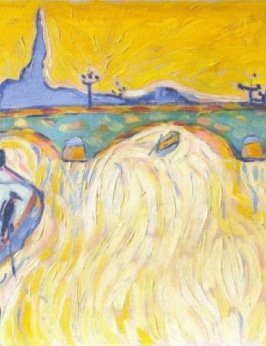Max Pechstein: “Seine Bridge with Freight Barges”

The brilliant forger. In 2010 Wolfgang Beltracchi was arrested by the German police. He was accused of having forged at least 30 paintings and having sold them for $45 million. Confessing to forging paintings by Max Ernst, Heinrich Campendonk, Andre Derain, and Max Pechstein as well as other artists, Beltracchi was sentenced to six years in prison. As it turned out, he and his wife managed to deceive the art world for more than 40 years.
What did the experts say. In the advent of the affair, experts found out that when manufacturing the artwork ‘Seine Bridge with Freight Barges’, the forger used an image projector to cast images of Pechstein watercolors and ink drawings onto larger canvases, then traced slightly altered copies using oil paint. By this method he should have been able to reproduce Pechstein’s brushstroke very accurately. Nevertheless, our AI System was able to recognize the imitation, and classified the piece as ‘not-authentic’ with a probability of 94.75%!

The brushstroke and a provocative thought. In general, brushstrokes appear as texture areas in paintings distinguishing themselves from other significant contours. Moreover, the stroke-like line segments in areas containing strong stroke characteristics show a clear directionality. Based on these observations, we have devised a Max Pechstein algorithm at Art Recognition to extract the orientation, shape, width and length of brushstrokes. This information is then fed into the AI System through a so-called ‘style and content algorithm’.
In the analyzed painting, the individual brushstrokes are clearly visible and pronounced. The AI has classified the submitted image as fake, hence it follows that there is a mismatch between the brushstroke learned from the original Pechstein training images vs the submitted piece. This finding raises the question of why the art experts who initially issued a positive evaluation failed to notice this difference.
